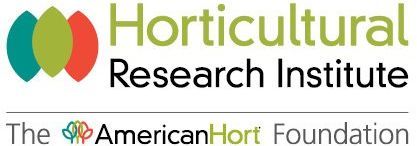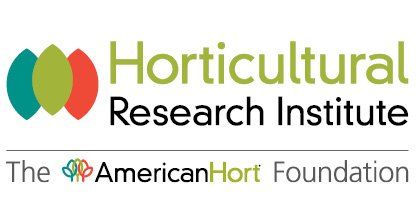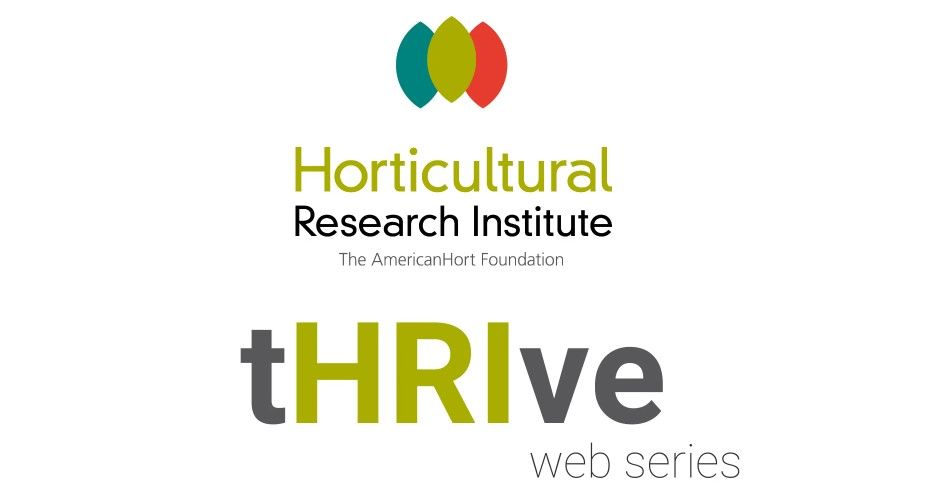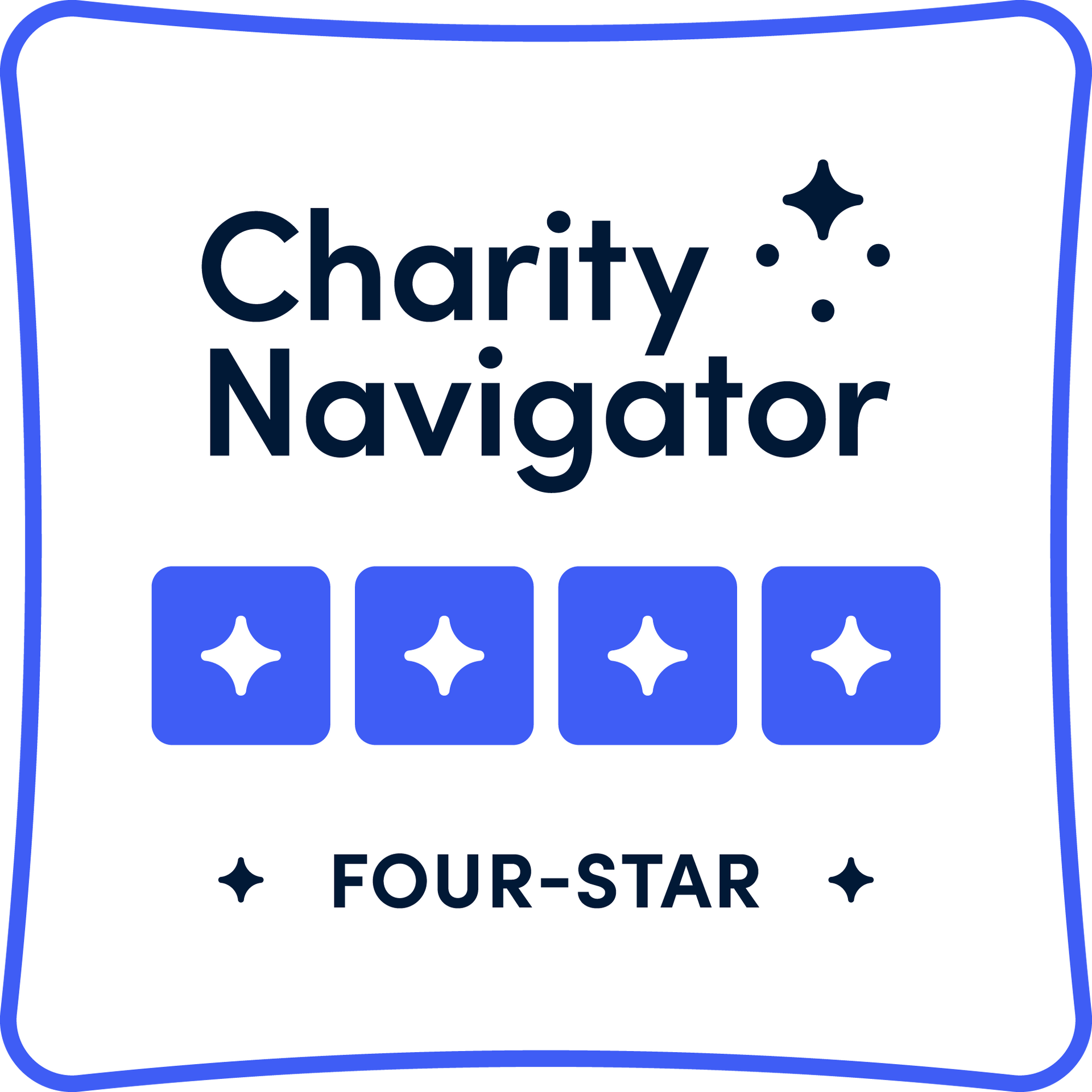Horticultural Research Institute Invests $420,000 in 13 Innovative Projects Addressing Critical Green Industry Challenges
The Horticultural Research Institute (HRI) is proud to announce the successful completion of its competitive grants application and review process for 2024, resulting in the selection of 13 impactful projects for funding. The total investment of $420,000 will be directed towards initiatives tackling a spectrum of green industry issues, including pest management, new technologies, marketing insights, and plant disease prevention.
HRI's commitment to advancing horticultural research that challenges current methods and fosters collaboration between businesses and researchers remains at the forefront of its mission. The selected projects align with HRI's commitment to advancing horticultural research within its four strategic areas of focus: quantifying plant benefits, creating innovative solutions, gathering consumer insights, and producing practical and actionable solutions. This comprehensive approach ensures that the funded projects will contribute significantly to the advancement of the green industry on multiple fronts.
Board President Leigh Geschwill expressed her enthusiasm for the selected projects, stating, "The diversity of the projects submitted during this year's application and review process continues to build the scientific building blocks the industry needs to succeed. The Horticultural Research Institute is confident that these projects will deliver actionable advice for green industry businesses throughout North America, ultimately contributing to the growth and resilience of our industry."
Jennifer Gray, HRI Administrator, emphasized the significance of the projects in meeting the unique needs of the horticultural industry. "Innovation and research are the cornerstones of a thriving green industry,” stated Gray. “The projects selected for funding each play a key role in driving progress, addressing challenges, and shaping the future of the industry.”
The funded projects are:
Identifying the causal agent and predisposing conditions that facilitate vascular streak dieback in redbud
F. Baysal-Gurel, Tennessee State University
Vascular Streak Dieback (VSD) in redbud is an emerging problem that has caused significant economic loss to nursery producers in the Southeastern United States in recent years. Even though the causal agent(s) of VSD has not been confirmed yet, Ceratobasidium theobromae (CT) has been identified both molecularly and morphologically and has always been associated with VSD symptomatic redbuds. CT is exhibiting a fastidious growth, hence isolating, and maintaining pure cultures of the fungus, and, more importantly, conducting Koch’s postulate is considered challenging. As every delay in a proper understanding of this issue, means more crop loss and a greater risk of the spread of the potential pathogen to new locales, nursery growers are seeking for a definitive and prompt diagnosis. Understanding the causal agent(s) and the conditions that favor the disease development is the key to the effective management of this novel threat. This proposed project aims to address several grower concerns regarding VSD by understanding the causal agent(s), predisposing environmental factors, and cultural practices that can accelerate VSD-related symptom development. Consequently, the findings of this study will enhance the horticulture industry’s profitability and consumer satisfaction with a better understanding of this threat.
Introgression of VSD resistance to Eastern Redbuds
Hsuan Chen, North Carolina State University
Redbud (Cercis spp.) is a valuable landscaping flowering tree, and easter redbud, C. canadensis, an east coast native species, is the most important one that has been in high demand because of its diverse ornamental traits. Vascular Streak Dieback (VSD), a wide-range infectious disease, has caused more and more damage in redbud production since 2020. This project aims to introgress the VSD resistance traits from a related species to eastern redbuds and to develop molecular markers for enhancing the breeding process. The long-term target of the project is to release VSD-resistant eastern redbud cultivars for the nursery industry.
Sequencing lilacs to discover genes for remontancy
Ryan Contreras, Oregon State University
Remontancy, or reblooming, is a preferred trait for ornamental plants because the extra or continuous flower season increases economic value of plants for growers and ornamental value for consumers. In taxa with this trait such as azaleas, roses, hydrangea, and lilac, reblooming cultivars dominate the market. Therefore, breeders would like to increase development of this trait in new cultivars. To streamline breeding, we have been developing molecular tools to predict which seedlings will be reblooming. Using new sequencing technology, our team will assemble a high-quality genome of Bloomerang® lilac that will allow us to identify the gene(s) responsible for reblooming in lilac and other taxa. In the near term we will use these tools to improve traditional breeding. Future aspirations include using new information to facilitate biotechnological methods to introduce reblooming in taxa where it previously has been absent.
Improving Reception: Better Detection of RFID Plant Labels with Drone Mounted and Handheld Readers
R. Thomas Fernandez, Michigan State University
This project will build on previously funded HRI research that investigated reading 9 different types of RFID labels at a commercial container nursery using an aerial drone mounted reader and a handheld reader that was walked through the plant beds. A total of 4,000 labels were used on 4 different plant types read every other month for 1 year. Labels were read at 95% or better for up to 7 of the label types depending on plant and dates with the handheld reader. 4 of these label types were read at 98% or better for all plants and all dates. Stake and loop-lock label types were the most effective, while adhesive labels were reading at 90% or less in most cases. Additionally, the power output needed for the payload and RFID reader for the drone reading system resulted in short flight times per battery charge that limited its effectiveness. Improvements made to the drone reading system for longer flight time and reader powering and improved label configurations based on the prior results will be evaluated for this round of funding to increase the effectiveness of the drone reading system and expand the range of label types.
Improving detection and resistance screening of current bacterial pathogen threats to the geranium industry
Jonathan Jacobs, Ohio State University
Diseases caused by microbial pathogens limit geranium production through the development of symptoms undesirable to consumers or even complete losses from whole plant death. The geranium industry regularly suffers losses from the bacterial blight pathogen Xanthomonas hortorum pv. pelargonii. A new, destructive lineage of this pathogen emerged in 2022, and this project aims to create diagnostic tools for emerging X. hortorum pv. pelargonii and screen geranium germplasm for resistance. We will directly engage stakeholders and make our knowledge and tools publicly available to the industry.
Improving Management of Rose Rosette Disease by Understanding Movement Behavior of Vector, Phyllocoptes fructiphilus
Shimat Villanasery Joseph, University of Georgia
The eriophyid mite Phyllocoptes fructiphilus transmits rose rosette virus to rose while feeding. This virus causes a serious disease in roses, referred to as rose rosette disease (RRD). The RRD and mites are common in ornamental landscapes. The mites can spread and threaten the container rose industry. This project is focused on understanding the temporal dispersal and determining the effects of water, nutrients, and insecticides on mite movement from the RRD symptomatic plants.
National Green Industry Survey
Melinda Knuth, North Carolina State University
This survey is the 8th national green industry survey conducted by this team of researchers. The overarching objective of this national survey is to quantify the extent of on-going structural changes in the U.S. green industry. This year we will have three repetitions of data series (2014 and 2018) capturing key information from retail and landscape service firms (in addition to growers). With three iterations of the data, time series analyses of long-term behaviors in H2A, H2B, water rights issues, and IPM practices will be able to be observed. Specific primary objectives are to: (1) determine the production, management and marketing practices of wholesale and retail nursery firms related to labor, water, IPM practices, marketing, and other critical issues; (2) identify structural changes and economic trends in the nursery and greenhouse industry; and (3) evaluate regional competitiveness within the national green industry.
Enhancing golden camellia’s accessibility and profitability by improving stem-cutting rooting rate and understanding its genetic diversity in USA
Haiying Liang, Clemson University
Cutting propagation is a widely used clonal approach to fix and maintain desired genotypes. However, some woody species notoriously have difficulty forming adventitious roots with this approach. This project investigates the effect of cutting length, leaf number kept on each cutting, and type of auxins and sugar solutions on the rooting rate of golden camellia, as well as the genetic diversity of the U.S. collection with molecular markers. Golden camellias are rare yellow-flowering camellia species. In addition to their aesthetic appeal, golden camellia flowers are valued for tea because they contain chemical compounds that may improve health. Driven by its scarcity and high ornamental value, golden camellias and their hybrids have a much higher market price and are sold out quickly each year. The project will provide knowledge to form rooting and breeding strategies for golden camellia in the floricultural industry.
Optimizing the use of rice hulls in container nursery weed management programs
Chris Marble, University of Florida
Preemergence herbicides are the foundation of most container nursery weed control programs, but many growers have limited or no options due to crop safety issues, label restrictions, and other concerns. Many nurseries are now turning to parboiled rice hulls (PBH) as a herbicide alternative, but questions remain concerning how PBH interact and affect other production inputs and their long-term efficacy against a broad spectrum of weed species. This project will focus on optimizing PBH use in container nurseries by evaluating their efficacy against a broad spectrum of weed species, determining optimal depth and application timing relative to potting, longevity under nursery environments, and effects and interactions between PBH rice hulls and other inputs such as irrigation, fertilization, and preemergence herbicides. Overall, the aim of this project is to provide growers with the information they need to optimize their use of PBH and get the most value from their weed management programs.
Evaluation of substrates for suppression of Phytophthora root and crown rot on greenhouse ornamentals
Inga Meadows, North Carolina State University
Wood substrate components are increasingly being used in place of peat in containerized production of herbaceous ornamentals. Despite an increase in their usage, little is known about how these components influence the incidence and severity of Phytophthora root rot, which negatively affects the production of herbaceous ornamentals nationwide. This research will evaluate the severity of Phytophthora root rot on petunia grown in media composed of different ratios of wood substrate and peat.
Establishing a CRISPR/Cas9-based system for breeding crapemyrtle with improved cold hardiness
Hongmin Qin, Texas A&M
Despite its widespread popularity, crapemyrtle faces economic losses in harsh winter regions due to its low cold tolerance. This research project aims to employ CRISPR/Cas9 gene-editing technology to enhance its cold tolerance. The anticipated outcomes include advancements in gene-editing technology for crapemyrtle, with potential applications extending beyond the scope of crapemyrtle itself. This project is critical for breeding new cold-hardy cultivars, expansion of the market to colder zones. The findings will be presented through conferences, publications, and industry events to maximize the impact of this innovative research.
Towards precision insecticide application for sustainable Green Industry practices by analyzing toxicity, sublethal- and low-dose effects on crapemyrtle bark scale through recording feeding behavior of insects on artificial diet
Hongmin Qin, Texas A&M
The Crapemyrtle Bark Scale (CMBS), an invasive pest, poses a significant threat to the green industry. Presently, managing CMBS infestations depends on neonicotinoid insecticides. The growing awareness of the detrimental effects of these insecticides underscores the crucial necessity for accurate application. This precision approach aims to optimize insecticide effectiveness and alleviate the environmental repercussions of systemic insecticides. The study will establish lethal, sublethal, and low-lethal concentrations of neonicotinoids for CMBS by utilizing insect life table and electrical penetration graph (EPG) assays. Our goal is to enable precise insecticide application, diminish environmental impact, and contribute to Integrated Pest Management (IPM) strategies tailored for CMBS in the horticultural sector.
Mapping water risk for US nursery and greenhouse growers
Sarah A. White, Clemson University
Water security is a critical issue facing greenhouse and nursery producers in the US. Whether we are discussing drought or flooding - water security and weather extremes are becoming more common. This project will develop a visualization tool (map) that enables water risk mapping for greenhouse and nursery growers throughout the conterminous United States, enabling strategic planning at local, regional, and national scales. Ultimately, results from this project will help growers in forward planning and strategic investment of resources to manage, and hopefully mitigate, climate risk at the operational level.
The HRI-supported projects will explore solutions to industry challenges, with a focus on sustainability, efficiency, and the overall well-being of the horticultural businesses. As the Horticultural Research Institute continues to support research, the impact of these projects is expected to extend to all segments of the industry.
Applications for 2025 research grant funding are being accepted at HRI’s website now through May 31, 2024.


The Horticultural Research Institute (HRI), founded in 1962, has provided more than $10 million in funds to research projects covering a broad range of industry issues. HRI is committed to supporting the horticultural industry’s ability to innovate, sustain essential functions, and respond effectively to challenges with research that can be practically applied in nurseries, greenhouses, retail garden centers, landscapes, and other green industry businesses.
All Rights Reserved | Horticultural Research Institute| Privacy Policy | Accessibility Statement



